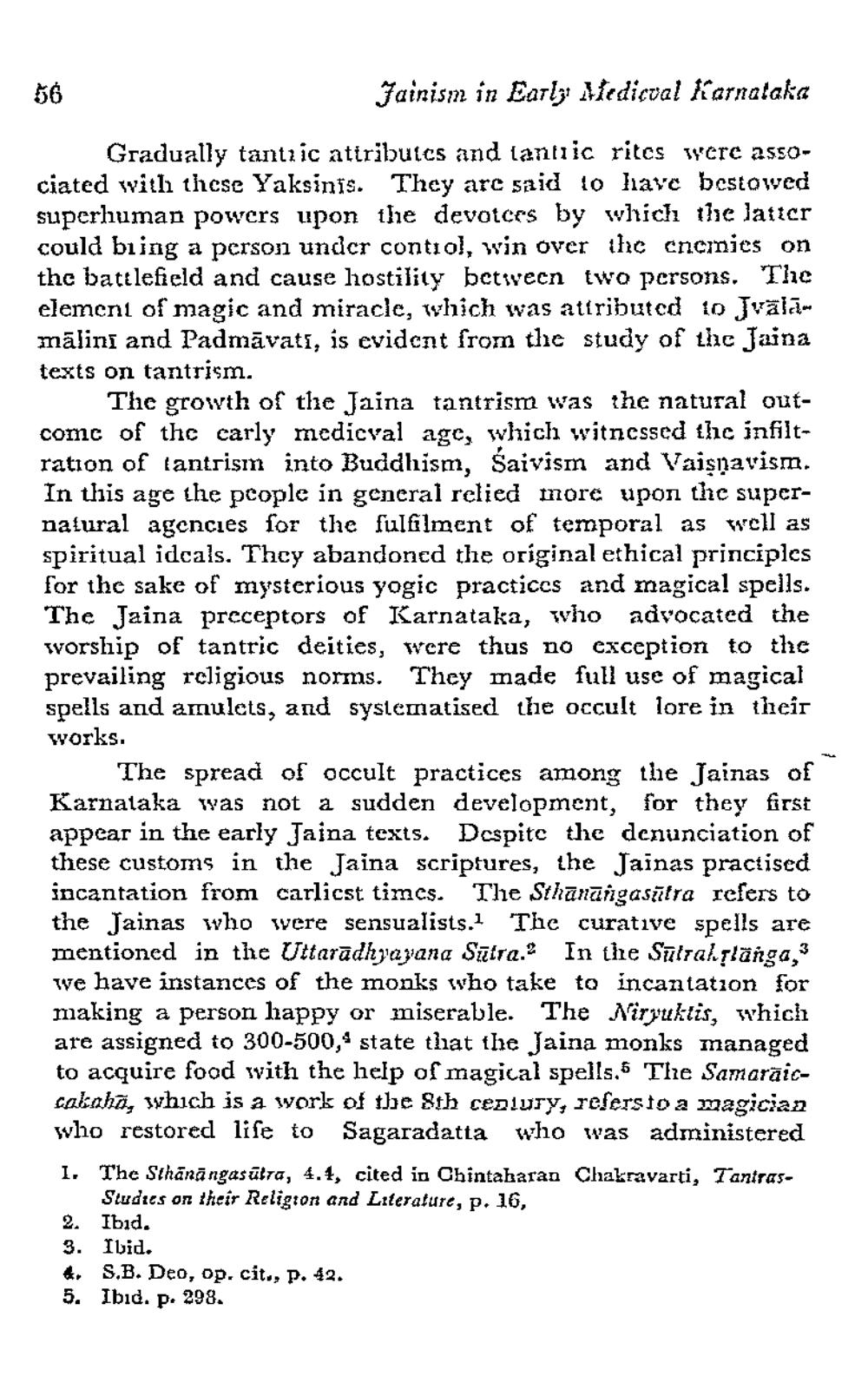________________
56
Jainism in Earlz: Medicval Karnataka
Gradually tantric attribuics and tantric rites were associated with these Yaksinis. They arc said to have bestowed superhuman powers upon the devotees by which the lattcr could bring a person under contiol, win over thc cncinies on the battlefield and cause hostility betsvecn two persons. The element of magic and miracle, which was attributcd 10 Jvälāmālins and Padmāvati, is evident from the study of the Jaina texts on tantrism.
The growth of the Jaina tantrism was the natural outcomc of thc carly medicval age, which witnessed the infiltration of tantrism into Buddhism, Saivism and Vaişņavism. In this age the people in general relied more upon the supernatural agencies for the fulfilment of temporal as well as spiritual idcals. Thcy abandoned the original ethical principles for the sake of mysterious yogic practices and magical spells. The Jaina preceptors of Karnataka, who advocated the worship of tantric deities, were thus no exception to the prevailing religious norms. They made full use of magical spells and amulets, and systematised the occult lore in their works.
The spread of occult practices among the Jainas of Karnataka was not a sudden development, for they first appear in the early Jaina texts. Despitc the denunciation of these customs in the Jaina scriptures, the Jainas practised incantation from carlicst times. The Sthanangasītra refers to the Jainas who were sensualists. The curative spells are mentioned in the Uttaradhyayana Sutra. In the Sultalslänga, 3 we have instances of the monks who take to incantation for making a person happy or miserable. The Nirruktis, which are assigned to 300-500,state that the Jaina monks managed to acquire food with the help of magical spells.6 The Samarāiccataha, which is a work of the 8th ceplury, referstoa magician who restored life to Sagaradatta who was administered
I.
2. 3.
The Sthānā ngasūtra, 4.4, cited in Chintaharan Chakravarti, TantrasStudies on their Religion and Literature, p. 16, Ibid. Ibid. S.B. Deo, op. cit., p. 42. Ibid. p. 298.
5.




